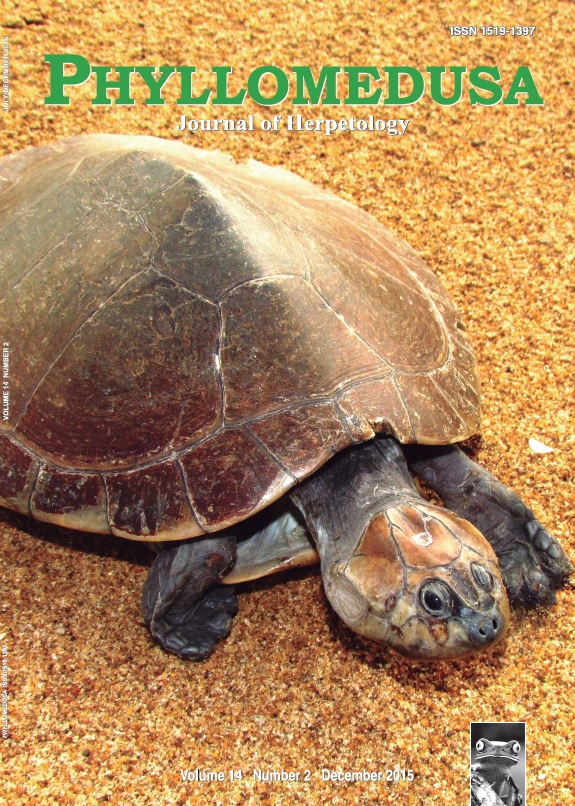Infection patterns of the chytrid fungus, Batrachochytrium dendrobatidis, on anuran assemblages in agro-ecosystems from Buenos Aires Province, Argentina
DOI:
https://doi.org/10.11606/issn.2316-9079.v14i2p113-126Keywords:
chytridiomycosis, Hypsiboas pulchellus, land-use change, Leptodactylus latrans, Pseudis minuta, Rhinella fernandezae.Abstract
Infection patterns of the chytrid fungus, Batrachochytrium dendrobatidis, on anuran assemblages in agro-ecosystems from Buenos Aires Province, Argentina. The disease chytridiomycosis, caused by the pathogenic chytrid fungus Batrachochytrium dendrobatidis (Bd), is linked to extinctions and declines of amphibians. Additionally, in the context of amphibian decline, the habitat loss related to agricultural landscapes is likely the single most important human activity affecting lowland amphibian populations. To assess the impact of anthropogenic land use on anuran response to Bd, infection patterns in several ponds from cultivated (CA) and uncultivated areas (UCA) were studied. Four anuran species (Rhinella fernandezae [Bufonidae]; juvenile and adult of Leptodactylus latrans [Leptodactylidae]; and the hylids Hypsiboas pulchellus and Pseudis minuta) were monitored and tissue samples were collected for Bd diagnosis and quantification. All species tested positive for Bd, but anurans inhabiting the UCA were twice more likely to be infected than those in the CA. Prevalence and infection level were significantly higher in the UCA, suggesting that vulnerability to Bd is associated with land use in agro-ecosystems. At the assemblage-level, the infection patterns also differed among species, and those with aquatic habitats (L. latrans and P. minuta) had high prevalence and infection levels of Bd. Juvenile stages of L. latrans had higher prevalence and infection level than adults in both study areas. This work contributes to our understanding of anthropogenic effects on host-pathogen relationships, particularly on the effect of Bd on anuran assemblages under different levels of agricultural impact.Downloads
Download data is not yet available.
Downloads
Published
2015-12-29
Issue
Section
Articles
License
All material originally published in Phyllomedusa belongs to Escola Superior de Agricultura Luiz de Queiroz - Universidade de São Paulo. All contents are under a license of Creative Commons BY-NC-ND.How to Cite
Agostini, M. G., & Burrowes, P. A. (2015). Infection patterns of the chytrid fungus, Batrachochytrium dendrobatidis, on anuran assemblages in agro-ecosystems from Buenos Aires Province, Argentina. Phyllomedusa: Journal of Herpetology, 14(2), 113-126. https://doi.org/10.11606/issn.2316-9079.v14i2p113-126



 Impact Factor (JCR): 0.600
Impact Factor (JCR): 0.600 CiteScore: 1.0
CiteScore: 1.0